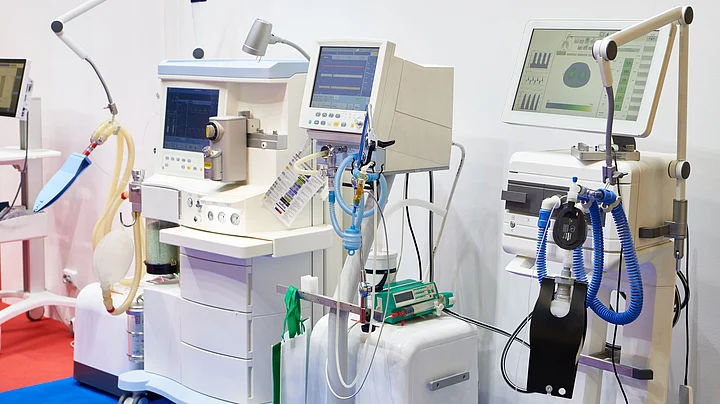The world is short of personal protective equipment, masks and ventilators or other respiratory devices in hospitals as the COVID-19 pandemic spreads. A call vent out to anyone who could help procure these necessities and that has led to several innovations.
Taking the cue, there are companies that have developed "prototype" ventilators that cost a few thousand rupees, compared to what hospitals use, which cost lakhs of rupees. While many are lauding the effort, it's not likely that every prototype or design can really help.
The trouble is not everyone is aware of how these ventilators function and how different each respiratory device actually is. So here's a quick piece to tell you the key differences.
Medical Ventilators
Price: Rs 2,00,000 to Rs 10,00,000
Ventilators are most-effective in treating acute respiratory distress syndrome (ARDS) or severe breathing issues, which is one of the dangerous symptoms of COVID-19 infection. Patients who are badly infected cannot breathe on their own and this is where these ventilators are critical.
Patients using these types of ventilators are usually intubated, which means a tube is pushed down their throats to the lungs, directly pushing air in and out. The ventilator has different attachments that allow for oxygen supply at varied rates and provide constant monitoring of other vital signs such as heart rate, blood pressure, oxygen saturation levels etc.
At these prices, and with the complexity these sensitive life-saving instruments carry, not every hospital has many of them – certainly not enough to battle the number of patients emerging from the coronavirus pandemic.
Ambulatory Bags
Price: Rs 1,500 - Rs 3,000
Ambulatory bags or ambu bags are usually used in first-aid by first-responders. They are also used by anesthetists in operation theatres. These are temporary manually operated respiratory devices that consist of a bag that pumps air into a patient's mouth/nose with a mask.
The ambu bag has to be manually operated to keep a person breathing, forcing air into their lungs. Most of the innovations that have been proposed lately are mechanical ambu bags, where a machine does the pumping action instead of a human. An oxygen cylinder can be connected to an ambu bag to aid in oxygen supply to a patient.
Respirators
Price: Rs 100 - Rs 500
Respirators or masks are preventive in nature. They don't actually aid in breathing, but ensure the safety of healthcare workers and others around patients. These masks come in different levels of filtration.
Filtration levels differ depending on the kind of mask. The popular N95 mask can filter out most pollutants and pathogens with ease. This is ideal for most purposes. The N99 mask is even better, filtering out 99 percent of particles (including bacteria and viruses).
And then there are gas masks, which come with disposable filters that are used in hazardous environments, that offer the best protection, but are more expensive and cumbersome.
Other Innovations
Helmet-Based Ventilation
Helmet-based ventilation is an innovation that can be used for non-critical patients who can still breathe on their own. It does not require intubation but has a secure "helmet" around the patient's head providing oxygen support.
It can be connected to a conventional oxygen cylinder or to a full medical ventilator as the need may be. While open oxygen support by masks to patients still carries the risk of contamination, helmet-based ventilation eliminates that risk. It can be used in a non-ICU setting as well, where sanitation may not be that stringent.
However, it is only an option. Critical patients will still need a proper mechanical ventilator with intubation.
